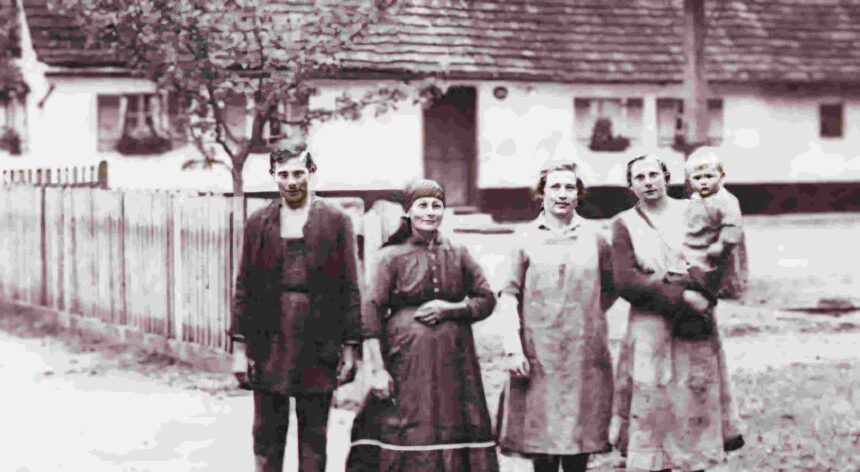In the history of unsolved crimes, few cases are as eerie and baffling as the Hinterkaifeck murders in 1922, in rural Germany. The cold-blooded killing of six members of the Gruber family remains a mystery to investigators and fascinates the public for generations. Even though many theories abound, the true identity of the killer or killers has never been established. Even to date, the gruesome happenings surrounding these murders will forever amaze people with a blend of eerie details, shocking twists, and unfinished mystery which lingers in the air like a dark cloud.
The story begins on a small, isolated farm called Hinterkaifeck in the rural Bavarian village of Grobern, not far from Munich, 40 kilometers north. In 1922, six people lived there: Andreas Gruber and his wife Cazilia, their daughter Victoria, Victoria’s two children (a daughter named Cazilia and a son named Josef), and the family maid, Maria Baumgartner.
The farm was secluded. There was surrounding dense forest, which made it very difficult for anyone to pass by without notice easily. That is going to be a decisive element in the case later on. Andreas Gruber was 63. He had been experiencing a series of unusual occurrences at the farm during the weeks leading up to the murders. Strange footprints began to appear in the snow going up to the farmhouse, yet no one knew where they came from. Odd noises came from the attic, but when Gruber went to check on them, nothing was there. More ominous still, Gruber found that a set of keys had disappeared.
The Murders
The night of the murders began normally. On the evening of March 31, 1922, all members of the Gruber family and their maid Maria Baumgartner were inside the house. Andreas Gruber had allegedly informed his neighbors that he had heard strange noises in the attic during the day but did not explain what kind of noises they were. He had also informed his neighbors that he had discovered fresh footprints going out of the house and leading to it. No one had suspected then that such occurrences would result in this tragic act of crime.
The night of the murders began normally. On the evening of March 31, 1922, all members of the Gruber family and their maid Maria Baumgartner were inside the house. Andreas Gruber had allegedly informed his neighbors that he had heard strange noises in the attic during the day but did not explain what kind of noises they were. He had also informed his neighbors that he had discovered fresh footprints going out of the house and leading to it. No one had suspected then that such occurrences would result in this tragic act of crime.
The killer or killers, who remained unknown, likely spent the night inside the farm. Sometime in the early morning hours of April 1, they systematically murdered each member of the Gruber family, as well as the maid. The method of killing was brutal. Andreas Gruber, Cäzilia, and Victoria were bludgeoned to death with a mattock, a farming tool that was later found near the bodies. The children, Josef and Cäzilia, were also murdered in the same fashion. Maria Baumgartner, the maid, was the final victim, and she was killed the same way as the others.
The killer’s actions were chillingly methodical. After he had committed the murders, he stayed on at the farm for several days. Neighbors later reported that the lights in the house never went out for a minute; they reported many strange activities in the farm; the murderer also seemed to have eaten the food of the family, using the kitchen and otherwise making himself quite at home for a while. It was like the murderer had fully taken control of the farm but without anyone near him noticing it.
Discovery of the Crime
It was not until days later, April 4, 1922, that the murder occurred. A neighbor by the name of Lorenz Schlittenbauer had visited the farm since he hadn’t seen or heard from the family in several days. When he entered the house, he found the bodies of the Gruber family and the maid. He promptly notified the police, and the case was investigated.
The discovery of the bodies brought so many questions to the fore. There was no struggle inside the house, indicating that the victims must have been either surprised by the attacker or that they had been incapacitated in some way before being killed. This is also shown by the fact that there were no defensive wounds, which means they may have been attacked while sleeping.
Besides, there were no signs of forced entry in spite of the severity of the murders, prompting an investigators’ speculation that the killer was either someone familiar with the family or someone who had access to the farm. What is strange is that the house of the family had been locked from the inside, and there were no indications that the killer had escaped through the front door or any other obvious exit.
The Investigation
The investigation into the Hinterkaifeck murders was intense and thorough, but despite the efforts of law enforcement, the case quickly grew cold. Many theories concerning the identity of the killer started to emerge; however, no one was confirmed. Several people have come out claiming to be the killer; however, nothing has ever materialized from such claims.
Lorenz Schlittenbauer, the neighbour who discovered the bodies, is one of the first suspects. Relationships of Schlittenbauer with Victoria Gruber were not straightforward, and many thought that Schlittenbauer was the father of her son, Josef. Rumors swept that Schlittenbauer could have had a motive for murder based on personal emotions for Victoria or a possible conflict over inheritance. Schlittenbauer was also questioned repeatedly; however, Schlittenbauer was ruled out as well.
Another suspect was Karl Gabriel, who was a local man and a former soldier. According to sources, he had been staying around the place. People who knew him said that Gabriel was spotted around the farm close to the date of murder. Speculatively, people were also saying that he had criminal activities in his past. Nevertheless, there was no trace connecting him to the committed crime.
Theories and Speculation
Various theories regarding the Hinterkaifeck murders have surfaced in the following decades. Among the most prominent theories is that the killings were done by an unknown who had hidden himself inside the attic or barn of the farm for an extended period of time before executing the crime. This could account for why nobody heard or saw anything out of the ordinary before the crime happened. Some even went to the extent of saying that the murderer could have been a psychopath who was psychologically driven to carry out the horrific crime for reasons unknown.
The Unsolved Mystery
To date, after many theories and hours of investigation, the Hinterkaifeck murders have not been brought to light. No one has ever been arrested or convicted with regard to the crime; the real identity of the killer remains unknown. Years have passed, as books, documentaries, and movies followed the case, but these still eerie details along with the unanswered questions continue to capture public imagination.




